Cochlea Unique Piece Automaton By Brittany ‘Nico’ Cox: Hare, Snail, Philosophy, History, And Horology. It’s Got It All And Will Make You Smile!
by Ian Skellern
Brittany Cox always wanted to make her own automata, which motivated her to study watch and clock restoration. She started out as a jeweler and then studied philosophy, which led her to objects both made and imagined during the Renaissance (1400-1600) and the Enlightenment (1715-1789) periods in Europe.
Cox earned her first degree in philosophy (focusing on metaphysics and epistemology), where she learned about historical automata. These were used as philosophical tools for analyzing the universe, questioning our capacities as humans, and exploring the possibility of recreating human intelligence and creating independent life forms using self-operating machines.
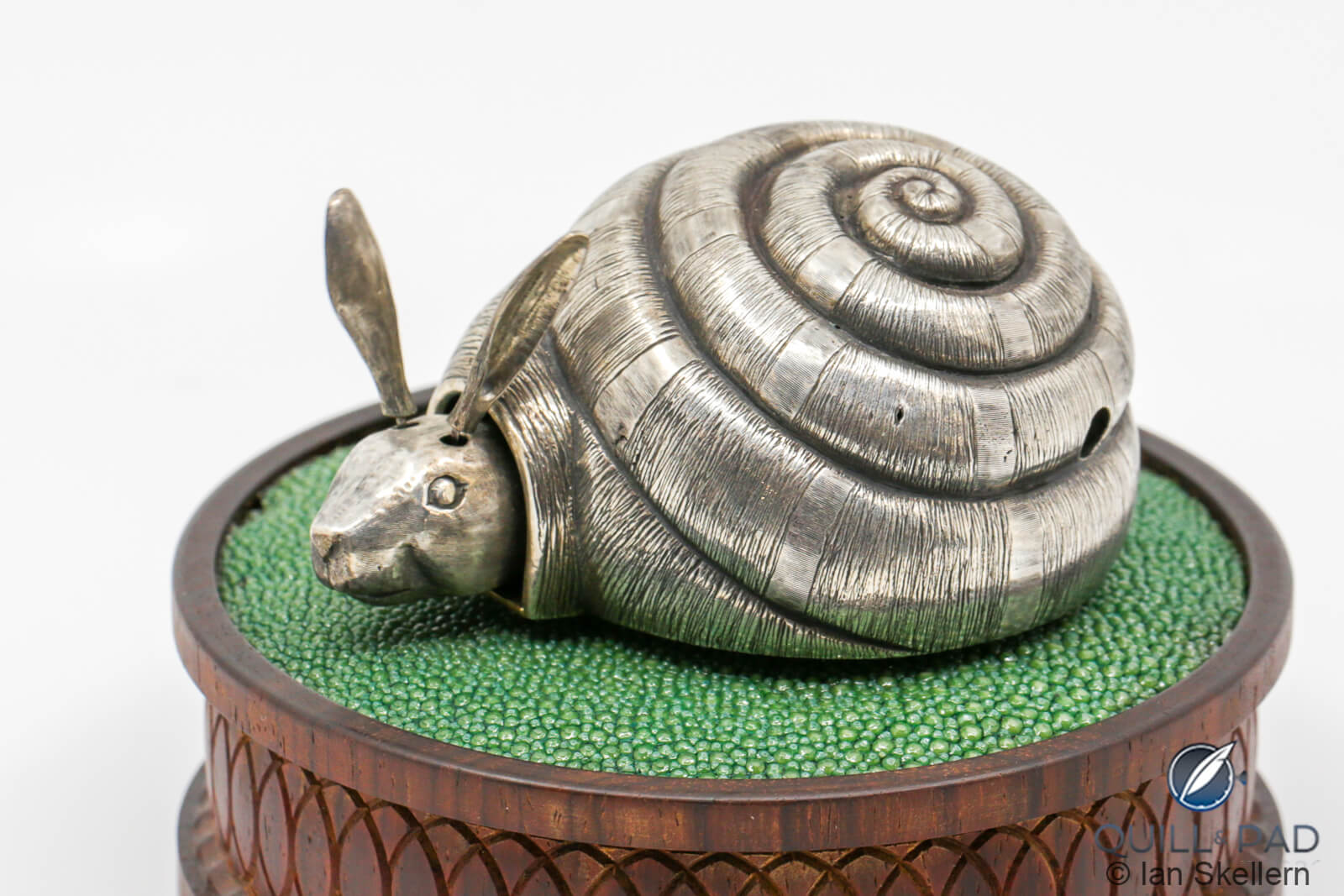
Cochlea automaton by Brittany Cox
Cox was fascinated by looking at philosophical problems from a tactile perspective, and automata were a practical application of these philosophical ideas. So when she finished her philosophy degree, she enrolled in watchmaking school to learn micro-mechanics, engineering, manufacturing small components, and finishing as a way to work with these historical objects and learn the skills to make them.
After qualifying as a watchmaker, she went to West Dean College in the UK to study eighteenth-century clockmaking. West Dean was then the only school in the world where one could learn the traditional hand skills for these types of traditional horology. She graduated in 2012.
Matthew Reed, her tutor at West Dean had worked on the eighteenth-century Silver Swan automaton, which Cox had learned about while studying philosophy. This was the object that really captured her attention because when it was exhibited at the Exposition Universelle (World’s Fair) in Paris in 1867 people were amazed at how lifelike it was, down to the movement of water reflecting off the feathers.
So she wanted to study with Reed, and he agreed to let her do a foundation course in clockmaking with the aim of specializing in automata. But it meant sourcing her own automates and basically creating her own curriculum.
Cox completed a master’s degree in the conservation and restoration of clocks and related dynamic objects. After that she worked at a museum in the Netherlands, which was basically an apprenticeship working on automata and music boxes. Then she returned to the USA and set up her own workshop in Seattle for conservation and restoration. She also gives classes in traditional guilloche.
That was a huge undertaking as the historic machines that she needed were as collectable (and as expensive) as the objects that she was working on.
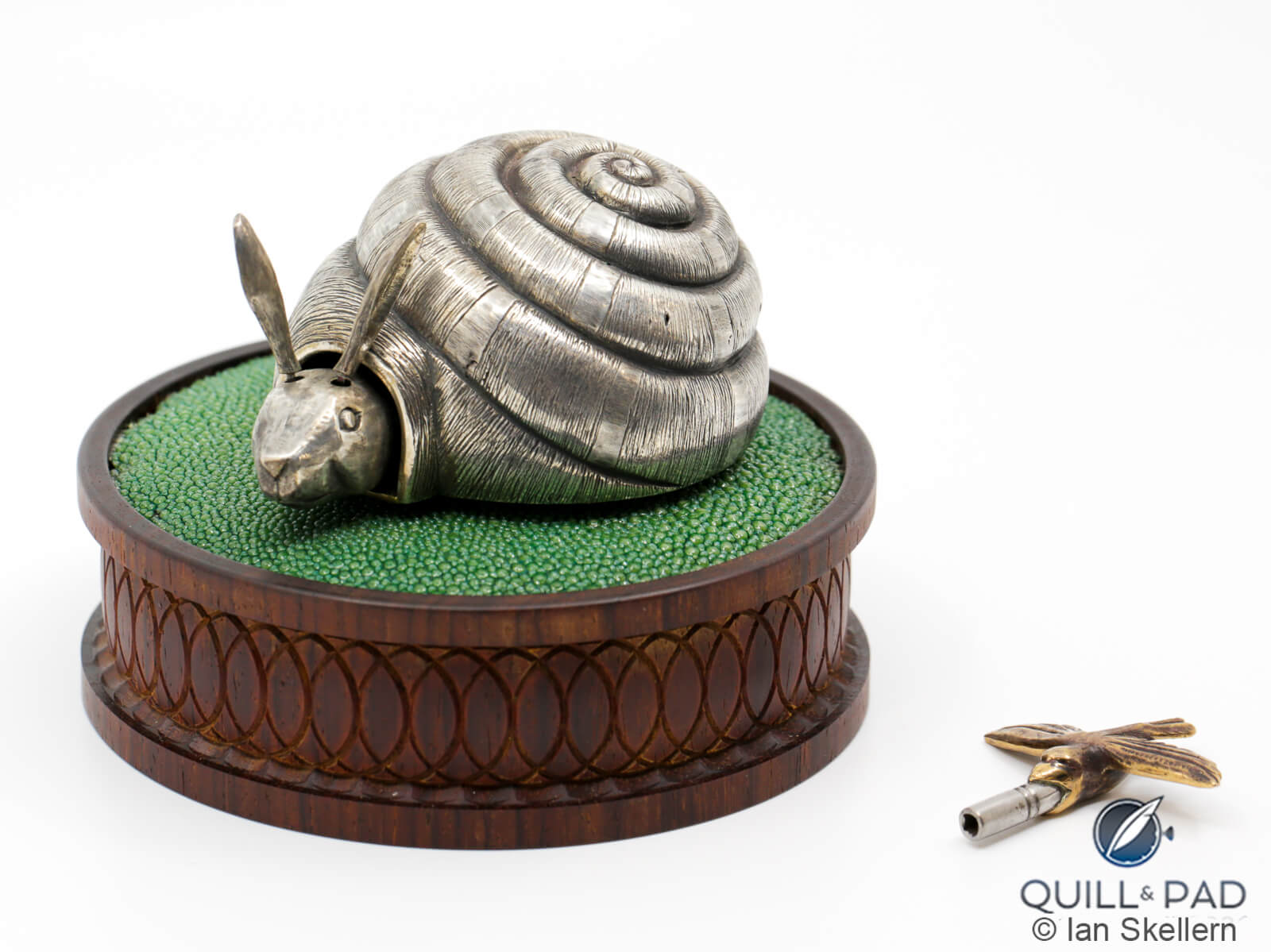
Cochlea automaton by Brittany Cox
As well as restoring antique automata (she does a lot of work on singing birds), Cox decided that she wanted to make a series of unique piece automata based on thirteenth-century bestiaries and illuminated medieval manuscripts.
From Wikipedia: “a bestiary (from bestiarum vocabulum) is a compendium of beasts. Originating in the ancient world, bestiaries were made popular in the Middle Ages in illustrated volumes that described various animals and even rocks. The natural history and illustration of each beast was usually accompanied by a moral lesson. This reflected the belief that the world itself was the word of God and that every living thing had its own special meaning.”
These imaginary “animals” were drawn by explorers who went out into the world and tried to describe what they “saw,” which was influenced by their superstitions, religions, biases, and what they wanted to see and say. These animals are more a manifestation and a mashup of inner selves rather than accurate depictions of reality.
Cox poured through ancient manuscripts selecting “animals” she liked and thought would work as automata. She ended up selecting ten designs for ten unique pieces, each of which will require its own custom movement.
The ten pieces will be: Snail (Cochlea), Stag, Lion, Serra, Whale, Otter, Hydra, Crocodile, Phoenix, Unnamed
Bestiary Number 1: Cochlea (snail with hare’s head)
Cox thought that Cochlea was significant because it holds many layers of duality: philosophies of east and west in one object, a snail with its golden ratio spiral shell. And in the case of Cochlea, a hand-engraved sterling silver shell.
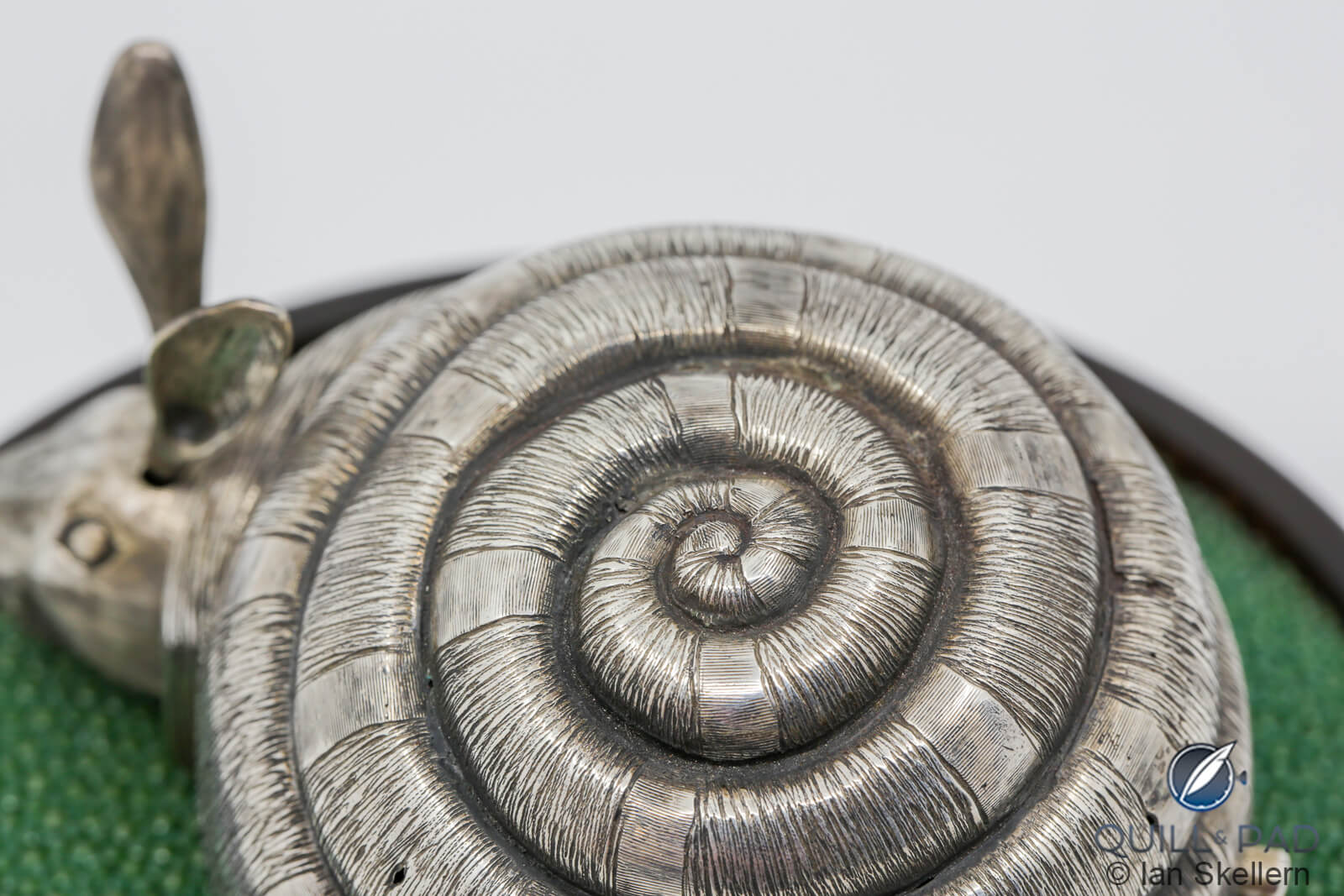
Cochlea’s golden ratio spiral hand engraved sterling silver shell
And Cox wants her automata to look old, like they are precious antique museum pieces.
Cochlea’s shell is first molded in wax and a form made to pour the silver. It is then hand-engraved. The constantly moving ears are not mechanically driven but powered by even the slightest of vibrations using an eighteenth-century French technique called en tremblant, which was usually used for setting gemstones, often in necklaces.
The movement, which is responsible for the path Cochlea follows, was inspired by the geometry of the snail’s shell. Cochlea’s path follows the historical philosophy of observable principles in nature that represent divine truth because they are a manifestation of mathematics. It moves in a figure eight, which represents infinity.
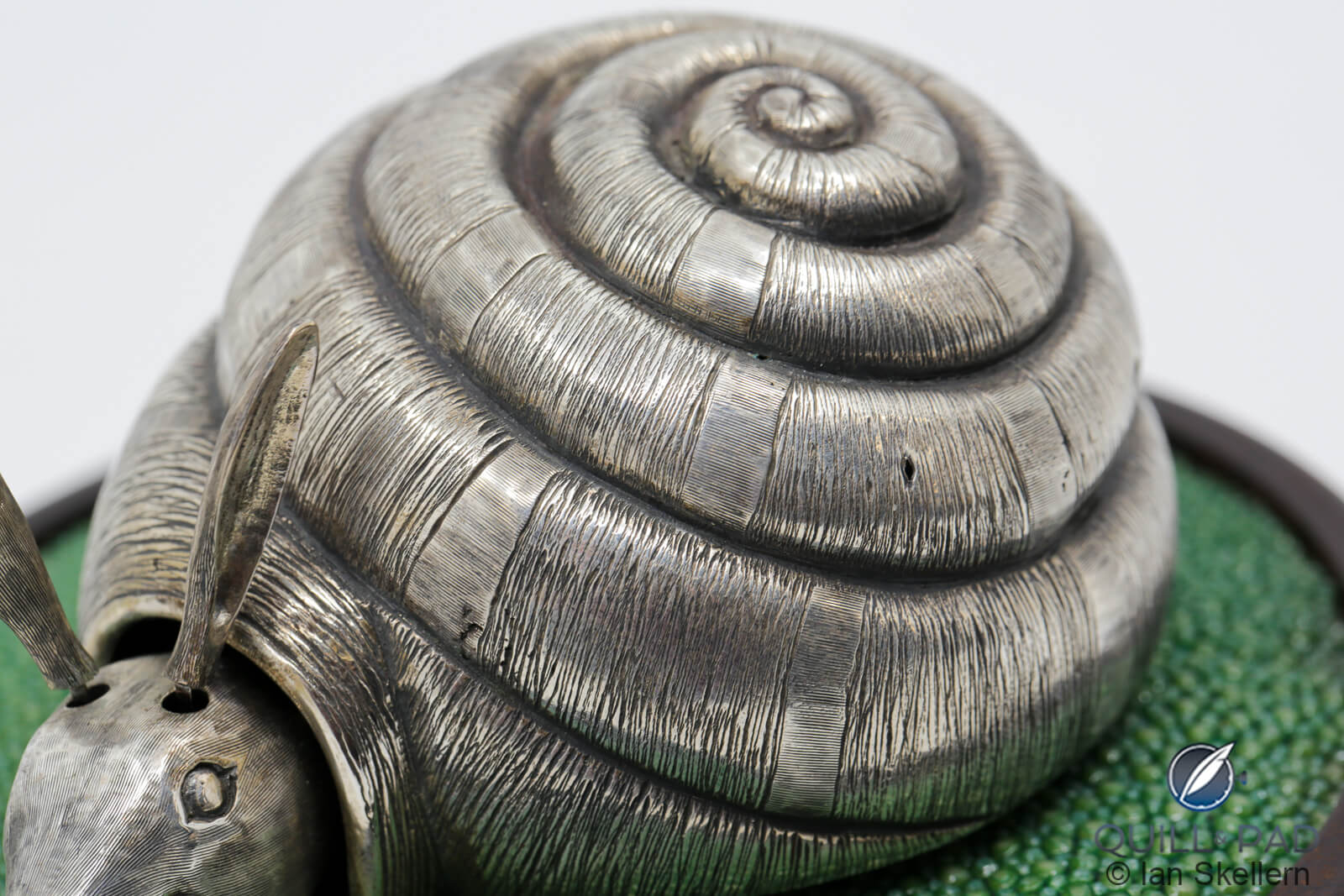
Cochlea automaton by Brittany Cox
Cochlea’s Stirling silver shell is hand chased and hand engraved.
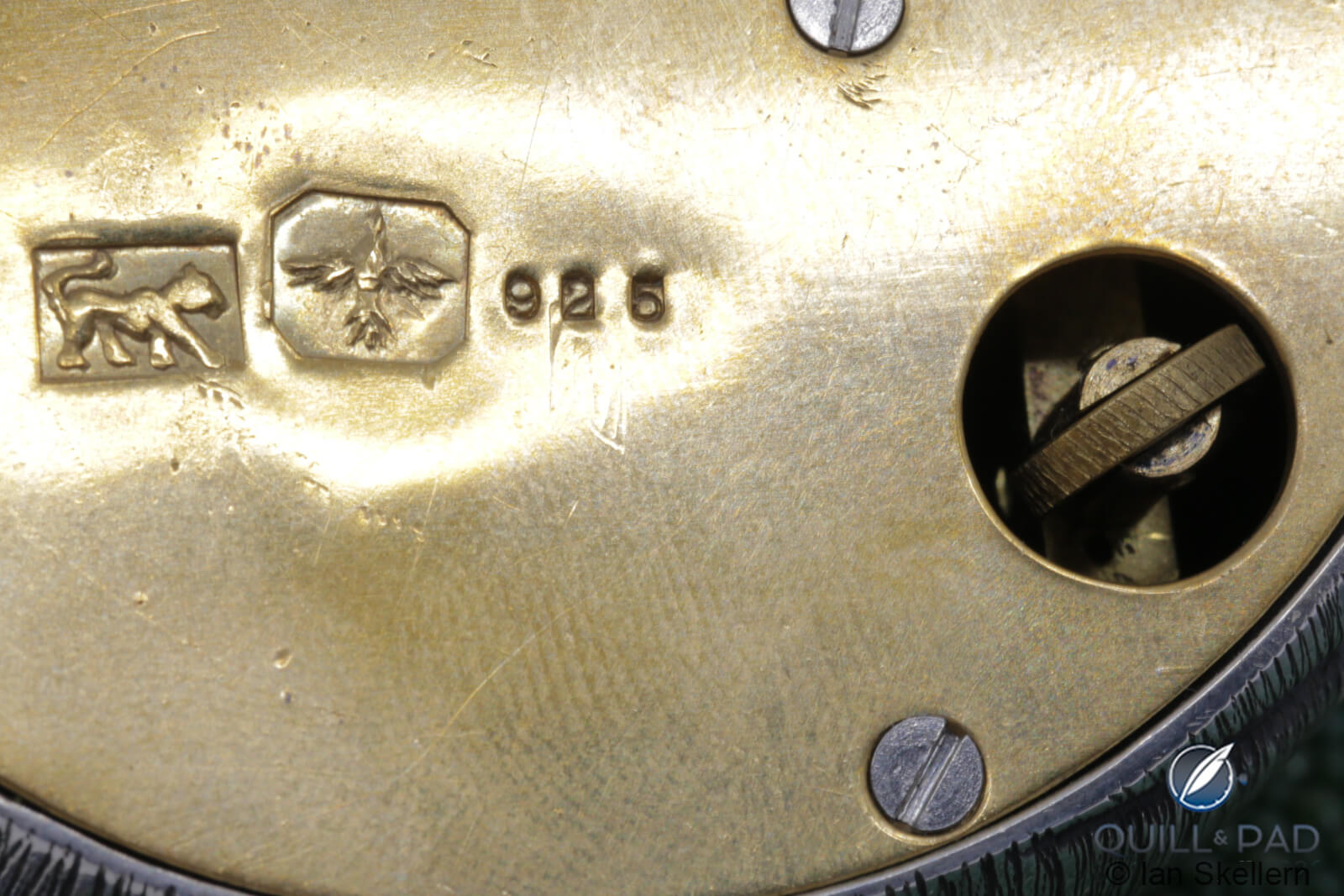
Hallmarks on Cochlea automaton by Brittany Cox
The silver shell is stamped with two hallmarks, one of which comes from one of her mentors, Phillip Peck, a Philadelphia goldsmith who crafted the shell, head, and ears. His hallmark is a tiger symbol and Cox’s is the bird. She grew up with birds, feels her heart is a bird, and she devotes much of her life to resurrecting/restoring singing bird automata.
The snail was considered divine as it represented perfection, both because of its golden ratio spiral shell and also because it can heal itself (both the Greeks and the Romans thought that eating snails cured a wide variety of diseases). Snails can go anywhere, they carry their homes with them, and they can move upside down. Another interesting fact about snails is their duality (a recurring theme for Cox): while they were thought divine, snails were also considered cowardly as they quickly retreat into their shell when threatened.
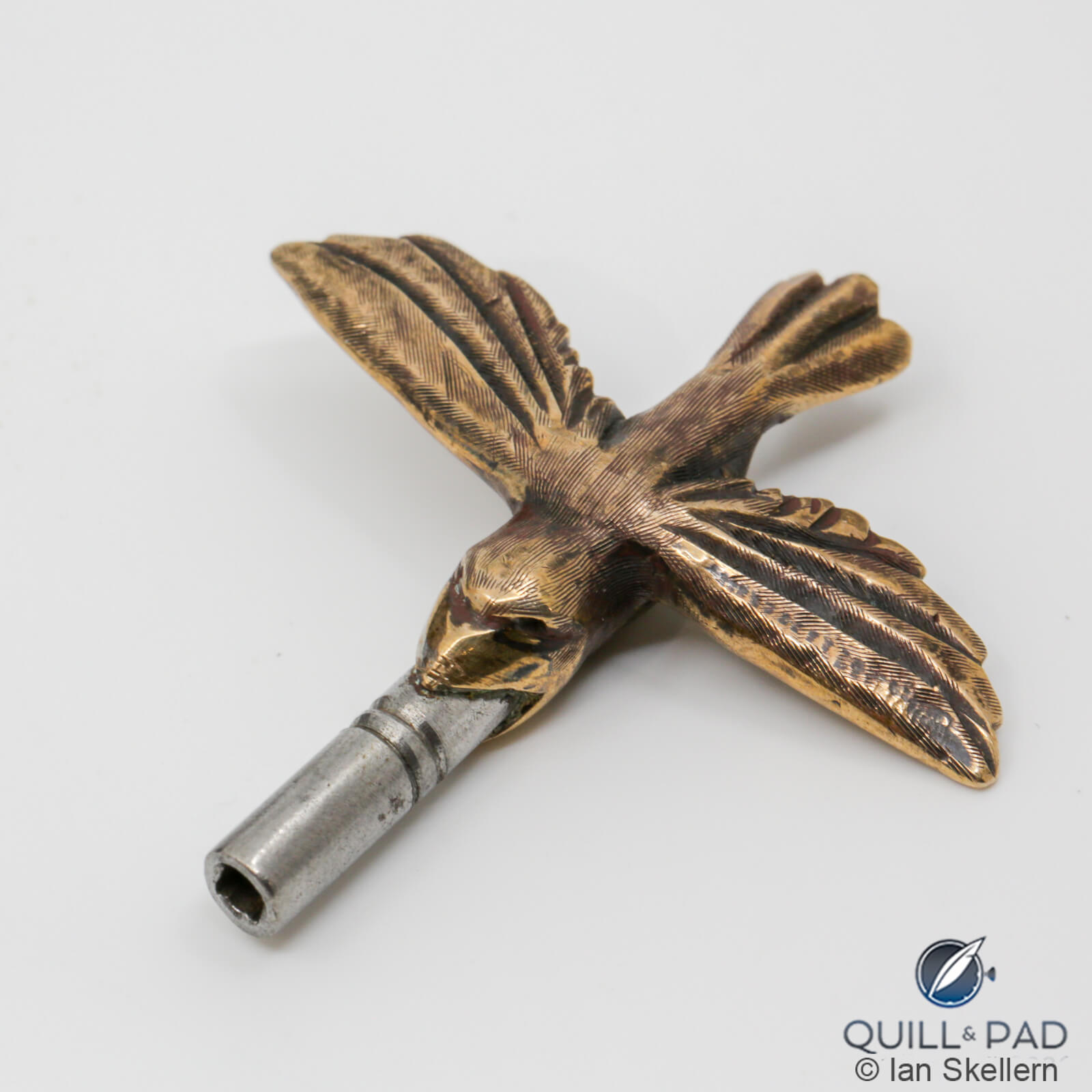
Winding key of the Cochlea automaton by Brittany Cox
The rabbit/hare represented everlasting life, another play on infinity (that figure eight symbol again). The rabbit also held dualities in both being associated with Easter (holy) and considered filthy because they reproduced so quickly.
The snail is slow, the hare is fast. Cox wanted Cochlea to be full of dualities, to make people think on many levels. That and to make people smile.
Movement
Designing and making the prototype movement of Cochlea was quite a challenge. The mainspring is from a Waltham eight-day watch, and a lot of time and experimentation was required to develop the exact shape of the cam that guides the snail’s path.
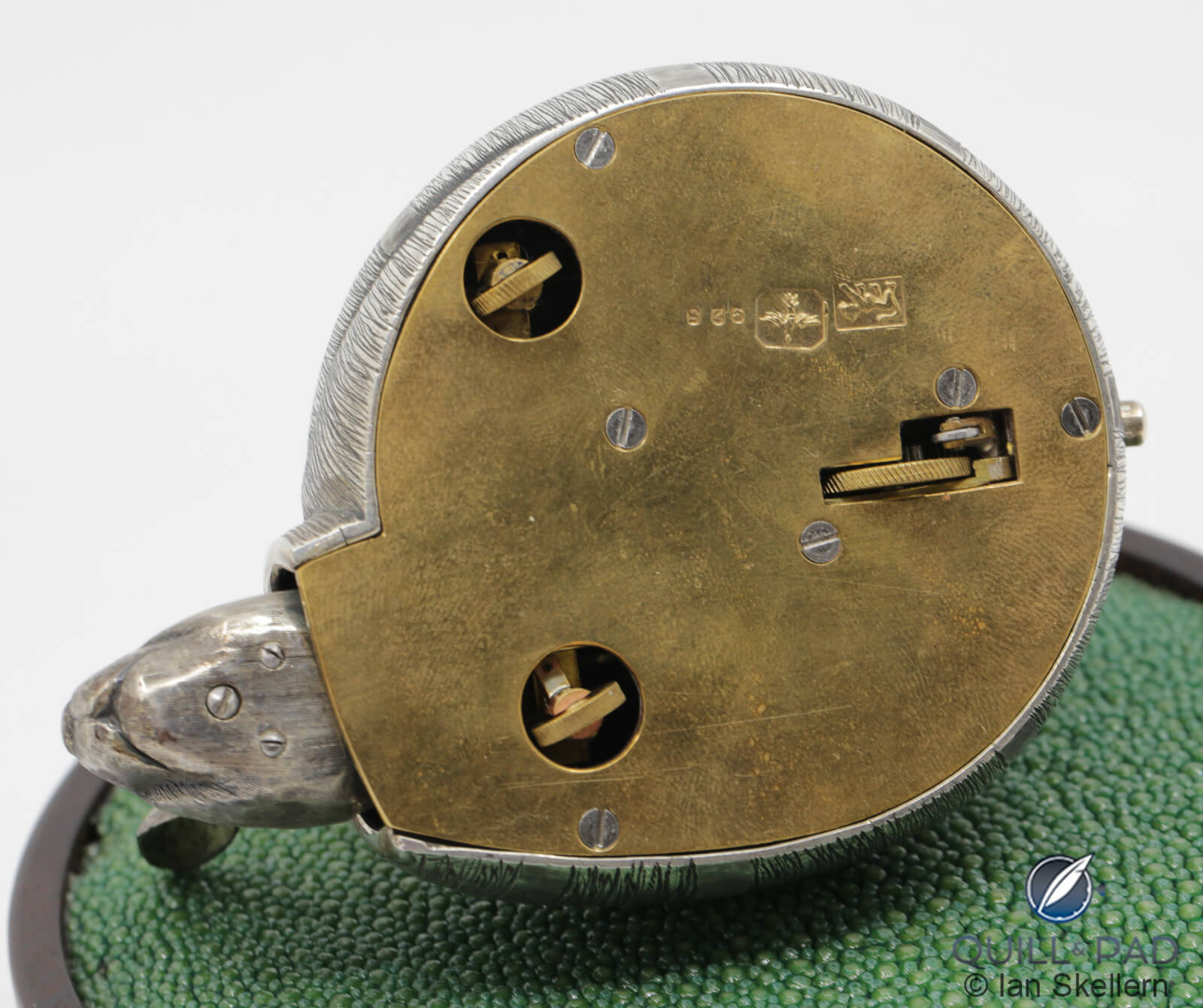
Base of the Cochlea automaton by Brittany ‘Nico’ Cox
Because the silver shell is so heavy, Cochlea needs its shell on to move, otherwise there isn’t enough weight/friction to stop its wheels from spinning. Cox could have added rubber to the wheels for more traction, but she wanted it to be as close to its era as possible. The metal wheels are knurled for grip.
The movement has a spinning governor (like in a minute repeater) to regulate the speed of the mainspring unwinding. The cam moves the head in and out and steers the front wheel.
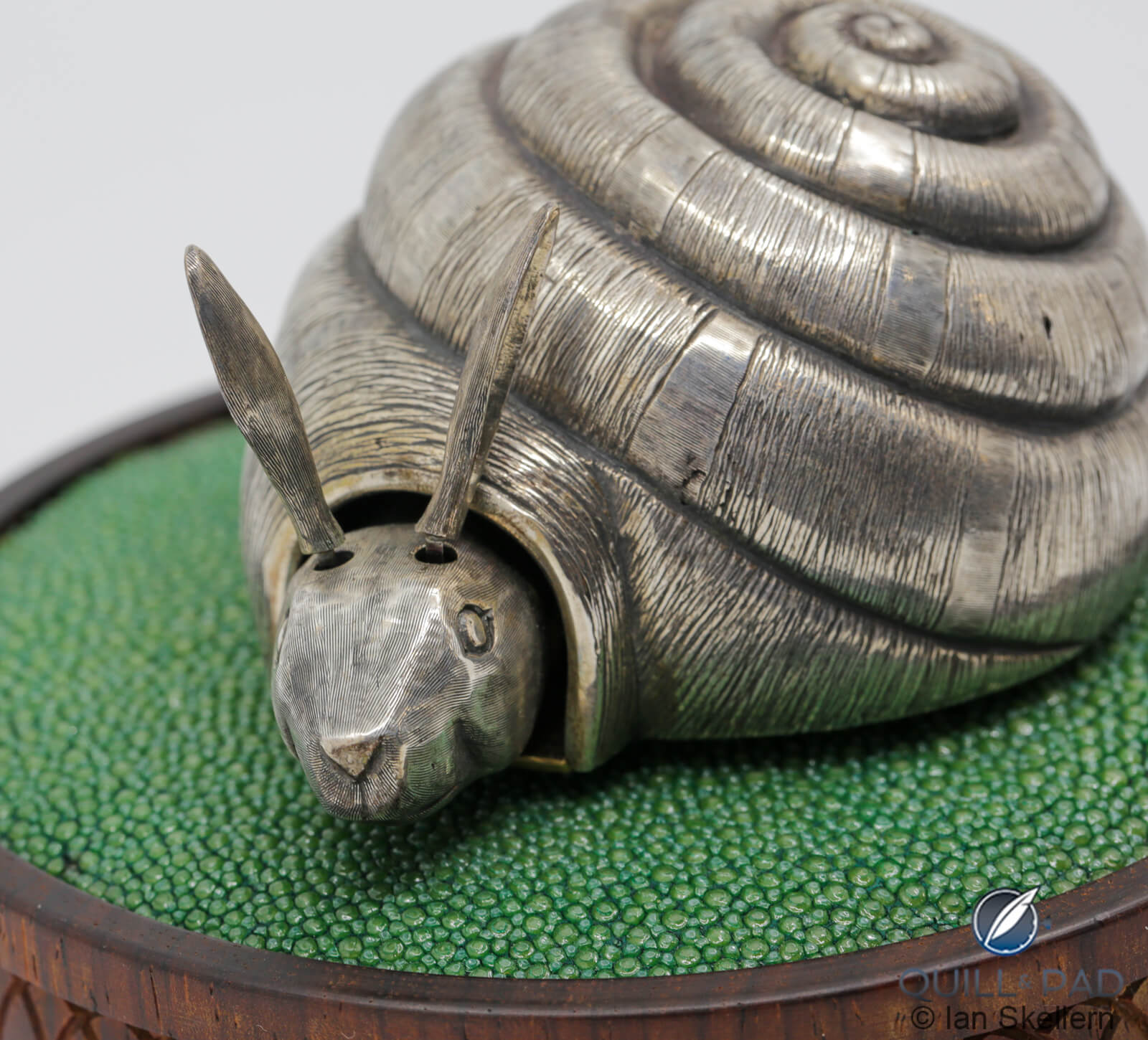
Cochlea automaton by Brittany Cox
Cochlea’s base is a work of art in itself. It is decorated with ornamental turning, which was used by sixteenth-century kings to commune with God via mathematics. The geometry is that of overlapping figure eights – generating a sunflower on the bottom and rings on the sides.
It features shagreen (polished stingray skin), which was used as a cover for antique scientific instruments. It’s a very traditional material. The timber is cocobolo, a tropical Central/South American hardwood with a strong floral odor.
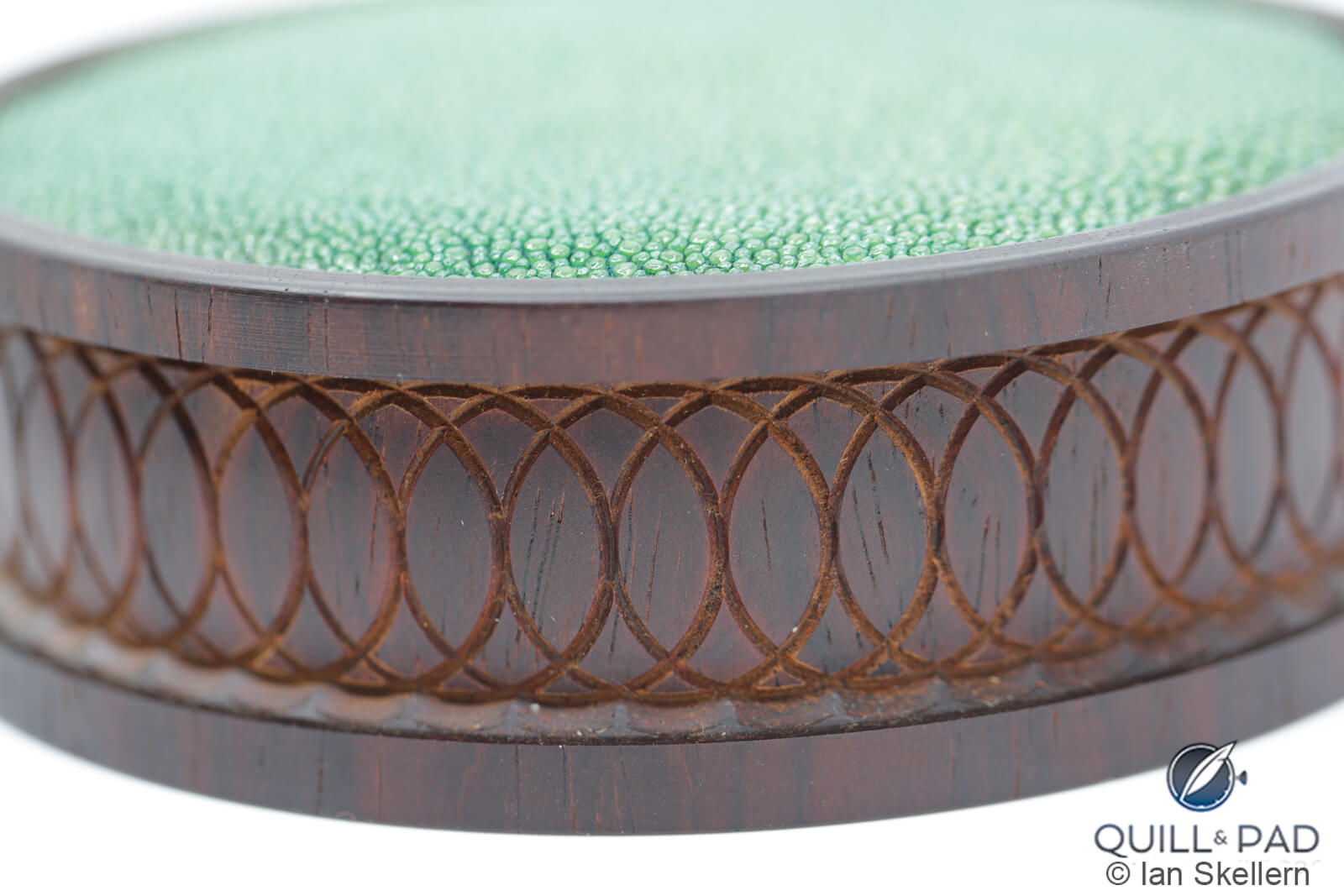
Engraved cocobolo timber stand of the Cochlea automaton by Brittany Cox
Cochlea is one of the most fascinating and fun horological objects that I’ve seen in recent years. Rarely has so much deep thought gone into one very special unique piece.
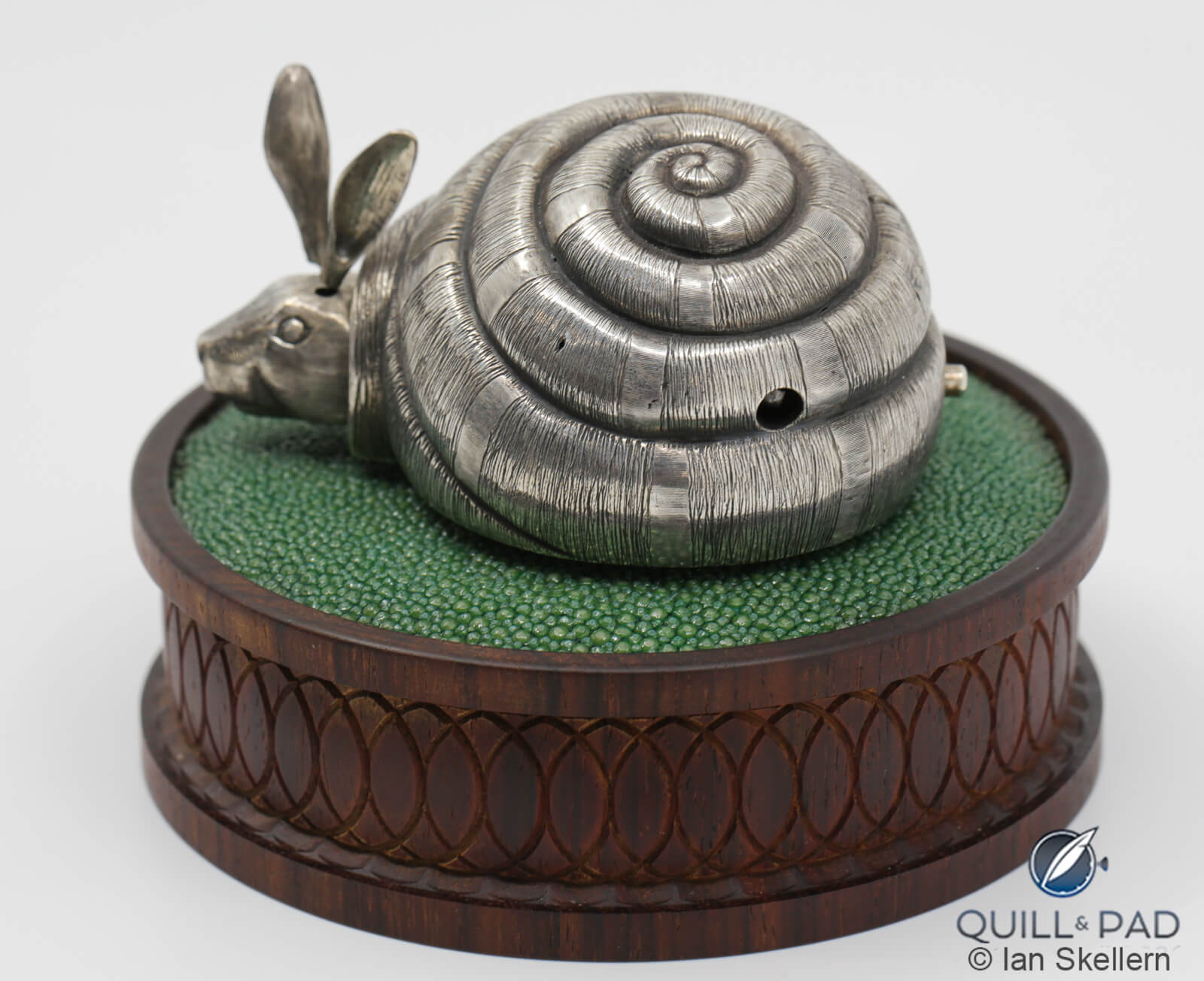
Cochlea automaton by Brittany Cox
Note that the present movement in Cochlea is a working prototype. Cox is now working on the final movement and expects to be able to deliver this first piece in her series within 12 months.
For more information, please visit mechanicalcurios.com.
Quick Facts Brittany Cox Cochlea automaton
Dimensions: 9 cm long x 6.4 cm wide x 5 cm high
Weight: 270 grams
Shell: sterling silver, hand-decorated
Movement: traditional handmade, specially developed for this piece
Limitation: unique piece
Price: $165,000 (excluding taxes and shipping)
* This article was first published 18 April 2022 at Cochlea Unique Piece Automaton By Brittany ‘Nico’ Cox: Hare, Snail, Philosophy, History, And Horology. It’s Got It All And Will Make You Smile!
You may also enjoy:
Presenting ‘Making Time’: The Greatest Watch Film Ever Made (In My Extremely Biased Opinion)
All About Automata: Mechanical Magic (With Action Videos)
Equus Forma Mechanica: The Parmigiani Fleurier Hippologia
300 Years Of Jaquet Droz – And The Brand Is Just Warming Up!



Leave a Reply
Want to join the discussion?Feel free to contribute!